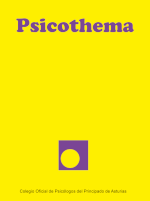Abstract
Background: There is a broad semantic network of aging stereotypes; where different concepts and their measurement are confused: personal stereotypes, self-stereotypes and self-perception of aging. Method: First, we analyze the translated version of the Image of Aging Scale (IAS) measurement model through exploratory and confirmatory factor analysis, with two representative sub-samples of the Spanish population aged over eighteen (N = 1,105) and in a sample of gerontologists and geriatricians (N = 325). Second, in an effort to disentangle the theoretical relationships between personal stereotypes, self-stereotypes and self-perception of aging, both the IAS (with different instructions) and Lawton’s 5-item scale were administered to a representative sample of Spanish people over 50. Results: Our results indicate that the Spanish version of the IAS has a similar psychometric structure to that proposed by the authors. Furthermore, the factorial structure (equal form and metric invariance) is replicated in both samples, but latent means and factor correlations were higher in the professional group. Conclusions: We discuss Levy’s theoretical assumptions about personal-stereotypes and the self-stereotype measured with IAS and their relationship to self-perception of ageing.Downloads
Download data is not yet available.
